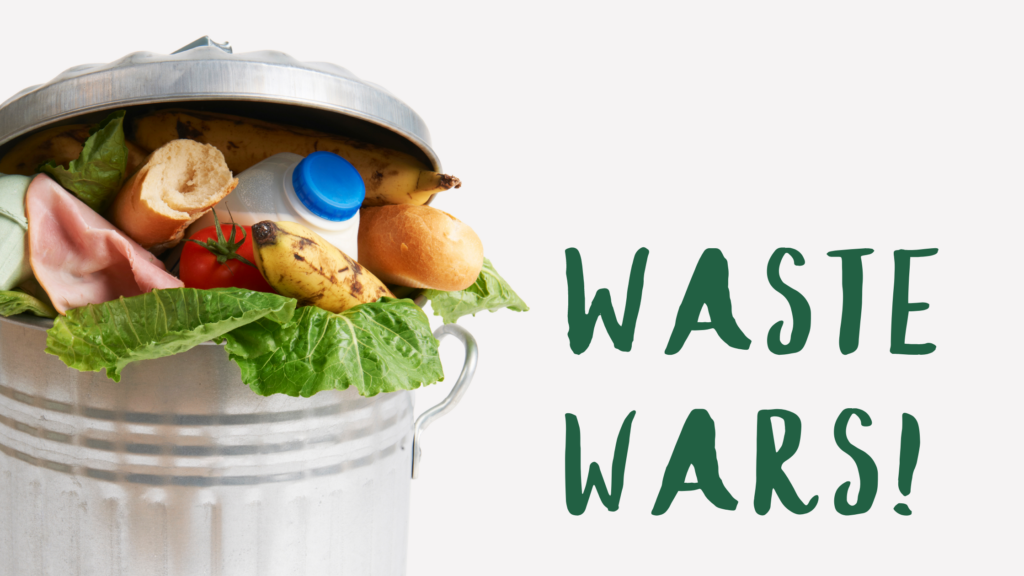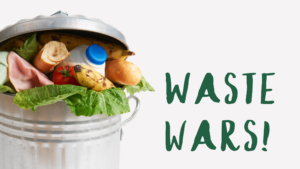This blog was written by Sarah Dwyer, mum of four and one of the new Parent Representatives on our Steering Committee.
We have all been there, it’s been a few days since we have been to the supermarket, we open the fridge, and we are staring at bits and pieces. A few salad leaves, a softish tomato, the odd carrot, some cauliflower pieces, an egg and a couple of rashes of bacon. What to do?!? The kids are starting to get rowdy as it is nearly dinner time. The easiest option is to just order take away. But at the back of our minds is the thought that if we don’t use these things today, they will probably have to be thrown out tomorrow! And with the cost of living increasing, this is the dilemma that so many of us busy and time poor parents face.
In Australia, over 7.6 million tonnes of food are thrown away or lost each year [i] and this is despite over 70% of this ‘waste’ being totally edible[ii]. This is equal to 1 in 5 bags of groceries, which is 312kg per person per year! [iii] Now these numbers aren’t made up of just food from households or restaurants that are put in the bin. It includes foods that are close to or beyond the ‘best-before’ dates that are discarded by retailers (which by the way, in some instances can still be consumed as this can sometimes just be a recommendation). It also includes produce that is perfectly edible but never reach the supermarket shelves as they may not meet the criteria for selling as they may not be the right shape, size or colour.
As we all try that little bit harder to live more consciously, at the back of my mind is that as many as 811 million people around the world in 2020 were affected by hunger. This number is rising exponentially due to the current conflicts in the world and the recent pandemic [iv].
So, I’m here to share with you a couple of my ideas on how I have started to reduce the food that we waste in our household and to get you thinking how you may be able to as well. Our house hold haven’t been successful 100% of the time, but I think we have given it a red hot go. Now at least one, if not two dinners per week are ‘make do’ ones where we use what is hanging around in the fridge, freezer or pantry to feed the 6 hungry tummies that are in our house. It’s funny, this is what our grandparents did wasn’t it? So it’s not anything new, just a reminder of what we can do to be a bit more creative in the kitchen and resourceful at the same time. The other benefit of this approach is that it helps keep down the weekly household spend on food, which currently is $187 per week per for a family of 4 in Australia or $255 for five or more[v].
Tips for waging your waste war
There are heaps of ways that we can reduce waste and make the food that we buy go further. Here are 3 tips to get you started.
Tip 1: Make the most of what you have
Instead of shutting the fridge door and acting on the urge to order Uber Eats, I’ve started to rummage in the back of the freezer and the pantry to see what’s there. It’s amazing what a forgotten packet of pasta, some frozen vegies and half a container of cream with some sauces and jarred condiments can turn into (hello pesto or Dijon mustard).
Tip 2: Think outside the box
This starts with looking for versatile ingredients. If something you are looking for isn’t in the pantry then maybe see what you can substitute it for. I know that if I have no idea of what to do with a few random ingredients, I often resort to popping them all into Google and seeing what comes up. Usually, I can re-create something that resembles the recipe in one way or the other with the added benefit of feeling pretty pleased with myself at the end of it!
Tip 3: Meal planning
We all know that it’s a good idea and it makes sense, but we don’t always seem to have the time. But it really does help if you can make the time and find 20-30 minutes each week to dig out the recipe books or start googling recipes. I also try to check the big supermarket websites too to see what bulk buy specials they have so I can save a few dollars here and there too. By planning what food is needed for the week ahead, short trips to the supermarket to pick up a couple of ingredients here and there can become less frequent, it can also help things run a tad smoother come dinner time as you know what meals you have the ingredients for and then any leftovers can become tomorrow’s lunch. You could even pop it in the freezer for another lunch or dinner next week!
So next time when you think you may not have enough in the kitchen to feed the family, take a moment to re-look at what’s there. See if you can come up with something that may be a little bit different to what’s on your usual menu but uses up what you have. At the same time knowing that you are doing your bit to help reduce the food that we all waste and it will also help the weekly grocery budget too!
[v] Canstar Blue, ‘What is the average grocery bill?’ (2021). https://www.canstarblue.com.au/groceries/average-grocery-bill/




